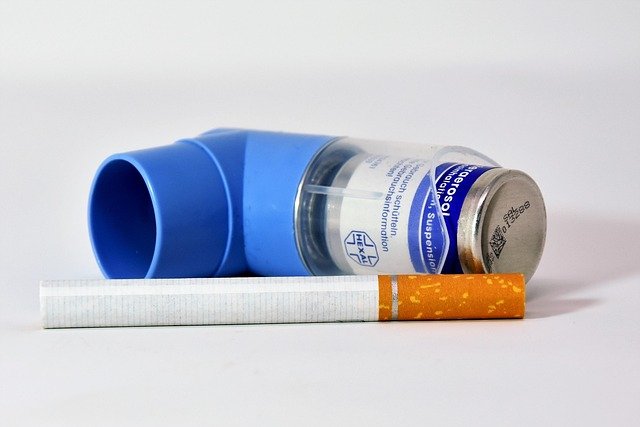Breathing in Danger: The Rising Threat of Respiratory Diseases in the United States
Respiratory diseases have become an increasingly concerning health epidemic across the United States, affecting millions of Americans and placing significant strain on our healthcare system. From chronic obstructive pulmonary disease (COPD) to asthma and lung infections, these conditions are impacting people of all ages at alarming rates. Understanding the causes, recognizing symptoms early, and knowing available treatment options can make the difference between managing these conditions effectively and facing serious health complications.

Why Are Respiratory Diseases on the Rise in the U.S.?
Several interconnected factors contribute to the growing prevalence of respiratory diseases across America. Air pollution remains a primary culprit, with urban areas experiencing higher concentrations of particulate matter and toxic gases that directly damage lung tissue. Climate change has extended allergy seasons and increased the frequency of extreme weather events, creating conditions that exacerbate respiratory problems.
Lifestyle factors also play a crucial role. Despite declining smoking rates overall, vaping has introduced new respiratory risks, particularly among younger populations. Additionally, increased indoor air pollution from household chemicals, poor ventilation, and allergens like dust mites and mold contribute to respiratory irritation. Occupational exposures in industries such as construction, mining, and manufacturing continue to pose significant risks to workers’ lung health.
The COVID-19 pandemic has further highlighted respiratory health vulnerabilities, with many individuals experiencing long-term breathing complications even after recovering from the initial infection. This has added another layer to the already complex landscape of respiratory disease management in the United States.
The Most Common Respiratory Conditions in the U.S.
Asthma stands as one of the most prevalent respiratory conditions, affecting approximately 25 million Americans. This chronic inflammatory disease causes airways to narrow and swell, making breathing difficult. Asthma rates have been steadily increasing, particularly among children living in urban environments with higher pollution exposure.
Chronic Obstructive Pulmonary Disease (COPD) affects nearly 16 million diagnosed Americans, with millions more likely undiagnosed. This progressive disease, primarily caused by smoking and long-term exposure to irritating gases, gradually worsens over time and significantly impacts quality of life.
Pneumonia remains a leading cause of hospitalization and death, particularly among elderly adults and those with compromised immune systems. Both bacterial and viral pneumonia can develop rapidly and require immediate medical attention. Sleep apnea, while often overlooked, affects millions of Americans and can lead to serious cardiovascular complications if left untreated.
Warning Signs You Shouldn’t Ignore
Recognizing early symptoms of respiratory diseases can prevent complications and improve treatment outcomes. Persistent coughing that lasts more than three weeks, especially when accompanied by blood or unusual colored mucus, warrants immediate medical evaluation. Shortness of breath during routine activities, such as climbing stairs or walking short distances, may indicate developing respiratory problems.
Wheezing, chest tightness, and recurrent respiratory infections signal potential underlying conditions that require professional assessment. Night sweats, unexplained weight loss, and chronic fatigue combined with breathing difficulties can indicate more serious respiratory diseases that need prompt medical attention.
Changes in breathing patterns, including rapid or labored breathing at rest, should never be ignored. Additionally, blue-tinged lips or fingernails indicate insufficient oxygen levels and require emergency medical care.
Diagnosing Respiratory Diseases
Modern diagnostic techniques have significantly improved the accuracy of respiratory disease identification. Pulmonary function tests measure lung capacity and airflow rates, providing detailed information about lung performance. Chest X-rays and CT scans offer visual assessments of lung structure and can detect abnormalities, infections, or tumors.
Blood tests can identify infections, measure oxygen and carbon dioxide levels, and detect inflammatory markers associated with various respiratory conditions. Bronchoscopy allows direct visualization of airways and enables tissue sampling when necessary for definitive diagnosis.
Sleep studies have become increasingly important for diagnosing sleep-related breathing disorders, while specialized tests like methacholine challenge tests help confirm asthma diagnoses. Healthcare providers often combine multiple diagnostic approaches to ensure accurate identification and appropriate treatment planning.
Treatment and Management Options
Treatment approaches for respiratory diseases have evolved significantly, offering patients more effective management strategies than ever before. Medication therapy forms the cornerstone of most respiratory disease treatment plans, including bronchodilators for opening airways, corticosteroids for reducing inflammation, and antibiotics for treating bacterial infections.
Inhaled medications deliver drugs directly to the lungs, maximizing effectiveness while minimizing systemic side effects. Long-acting medications help maintain consistent symptom control, while rescue inhalers provide rapid relief during acute episodes.
| Treatment Type | Provider Examples | Estimated Cost Range |
|---|---|---|
| Pulmonary Rehabilitation | Cleveland Clinic, Mayo Clinic | $1,500-$3,000 per program |
| Specialist Consultation | Local pulmonologists | $300-$500 per visit |
| Diagnostic Testing | LabCorp, Quest Diagnostics | $200-$800 per test |
| Home Oxygen Therapy | Apria Healthcare, Lincare | $150-$300 monthly |
Prices, rates, or cost estimates mentioned in this article are based on the latest available information but may change over time. Independent research is advised before making financial decisions.
Pulmonary rehabilitation programs combine exercise training, education, and behavioral modification to improve quality of life for patients with chronic respiratory diseases. These comprehensive programs have demonstrated significant benefits in reducing hospitalizations and improving exercise tolerance.
Oxygen therapy provides supplemental oxygen for patients with severe respiratory impairment, while mechanical ventilation supports breathing in critical cases. Surgical interventions, including lung transplantation, offer hope for patients with end-stage respiratory diseases.
Lifestyle modifications remain essential components of respiratory disease management. Smoking cessation, air quality improvement, regular exercise within individual limitations, and vaccination against respiratory infections all contribute to better outcomes. Environmental modifications, such as using air purifiers and avoiding known triggers, help minimize symptom exacerbations.
The landscape of respiratory disease treatment continues evolving with advances in personalized medicine, targeted therapies, and innovative delivery systems. Early intervention, comprehensive care coordination, and patient education remain fundamental to successful respiratory disease management in the United States.
This article is for informational purposes only and should not be considered medical advice. Please consult a qualified healthcare professional for personalized guidance and treatment.




